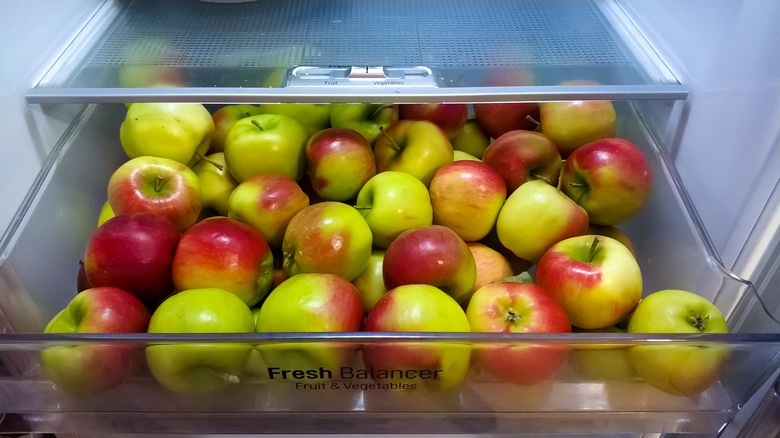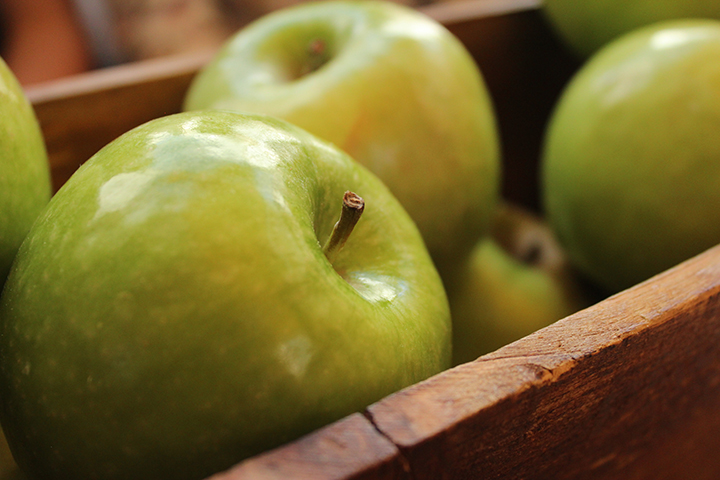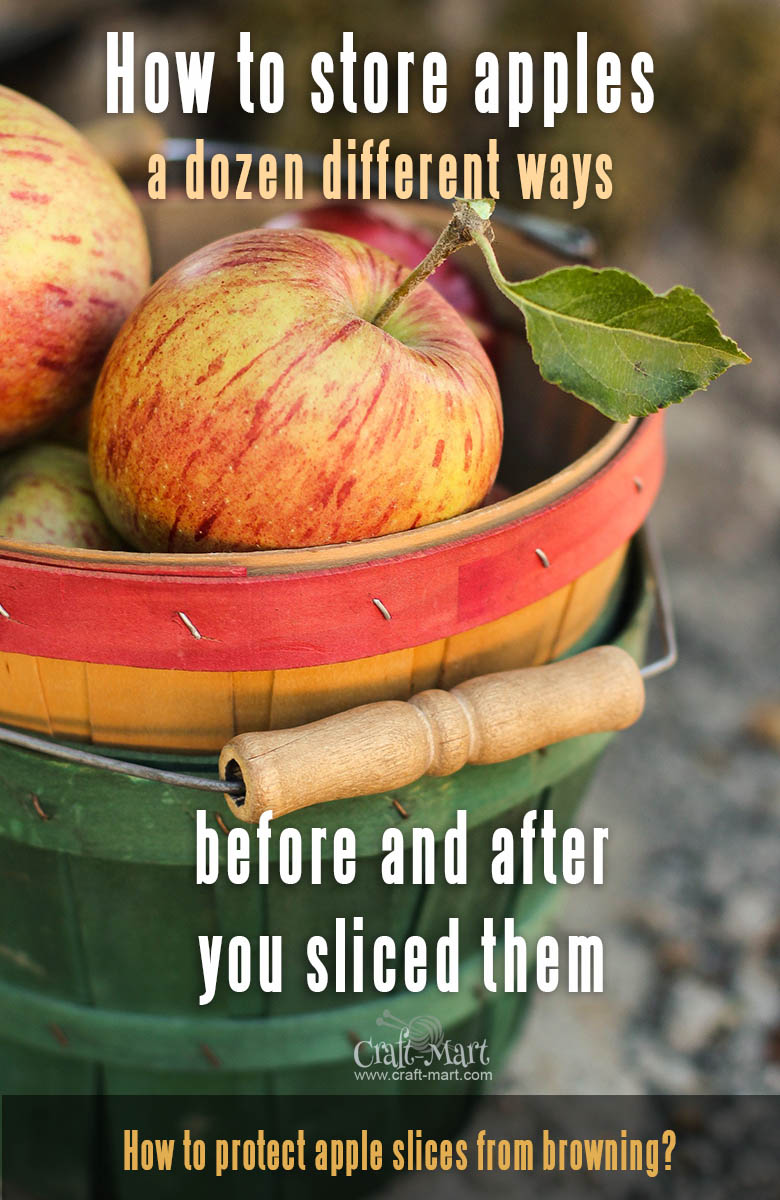Understanding Apple Storage Basics
Proper apple storage is crucial for maintaining their freshness and quality. The way apples are stored can significantly impact their shelf life, making it essential to understand the basics of apple storage. When it comes to storing apples, several factors come into play, including temperature, humidity, and light. These elements can affect the rate of ripening, spoilage, and overall quality of the apples.
Temperature plays a significant role in apple storage. Apples should be stored in a cool environment, typically between 32°F and 40°F (0°C and 4°C). This temperature range slows down the ripening process, allowing apples to remain fresh for a longer period. Humidity is another critical factor, as apples should be stored in a relatively humid environment, with a relative humidity of 80-90%. This helps maintain the apple’s natural moisture barrier, preventing dehydration and spoilage.
Light is also an essential consideration when storing apples. Apples should be stored in a dark place, away from direct sunlight, which can cause the production of ethylene gas. This gas promotes ripening and can lead to spoilage. By controlling these factors, you can create an optimal storage environment that helps maintain the freshness and quality of your apples.
When it comes to storing apples, different methods can be employed, each with its advantages and disadvantages. Some common methods include storing apples in a fruit bowl, using a fruit keeper, or storing them in a cool, dark place. The best way to store apples depends on various factors, including the type of apple, its ripeness, and personal preference. By understanding the basics of apple storage, you can make informed decisions about how to store your apples and keep them fresh for a longer period.
So, what is the best way to store apples? The answer lies in creating an optimal storage environment that takes into account temperature, humidity, and light. By controlling these factors and using the right storage methods, you can enjoy your apples for a longer period and maintain their freshness and quality.
Choosing the Right Storage Container
When it comes to storing apples, the right storage container can make a significant difference in maintaining their freshness and quality. With various options available, it’s essential to choose a container that meets the specific needs of your apples. In this section, we’ll explore the pros and cons of different storage containers, including plastic bags, paper bags, and ventilated containers.
Plastic bags are a popular choice for storing apples, but they have some drawbacks. They can trap moisture and ethylene gas, which can lead to spoilage and decay. However, some plastic bags, such as those with breathable membranes or perforations, can help to regulate humidity and prevent moisture buildup. For example, the OXO Good Grips produce bags are designed with breathable membranes to maintain optimal humidity levels.
Paper bags, on the other hand, are a more natural and eco-friendly option. They allow for airflow and can help to regulate humidity, making them a good choice for storing apples. However, paper bags can be prone to tearing and may not provide the same level of protection as plastic bags. Look for paper bags specifically designed for produce storage, such as those with wax coatings or reinforced seams.
Ventilated containers are another option for storing apples. These containers allow for airflow and can help to regulate humidity, making them an excellent choice for storing apples. Ventilated containers can be made of plastic, metal, or wood, and some popular options include the Rubbermaid produce keeper or the Sterilite ventilated storage container. When choosing a ventilated container, look for one with adjustable vents to control airflow and maintain optimal humidity levels.
When selecting a storage container, consider the type of apples you’re storing, their ripeness, and your personal preferences. For example, if you’re storing delicate apples, you may want to choose a container with extra cushioning or support. Ultimately, the best storage container for apples is one that provides optimal humidity, airflow, and protection from spoilage and decay.
By choosing the right storage container, you can help to maintain the freshness and quality of your apples. Whether you’re storing apples for a short period or for long-term preservation, the right container can make a significant difference. So, what is the best way to store apples? The answer lies in selecting a storage container that meets the specific needs of your apples and provides optimal conditions for maintaining their freshness and quality.
How to Store Apples at Home
Storing apples at home requires some basic steps to ensure they remain fresh and of high quality. By following these simple steps, you can enjoy your apples for a longer period and maintain their nutritional value.
Step 1: Sort and Clean the Apples
Before storing apples, it’s essential to sort and clean them. Remove any apples that are bruised, rotten, or damaged, as these can spoil the entire batch. Gently wash the apples with cool water to remove any dirt, bacteria, or pesticide residues. Use a soft-bristled brush to clean the apples, especially around the stem and blossom ends.
Step 2: Dry the Apples
After washing and cleaning the apples, dry them thoroughly with a clean towel or paper towels. This helps to remove excess moisture, which can lead to spoilage and decay. You can also use a salad spinner or a clean cloth to dry the apples.
Step 3: Store the Apples in a Cool, Dark Place
Once the apples are clean and dry, store them in a cool, dark place. The ideal storage location is a room with a consistent temperature between 32°F and 40°F (0°C and 4°C) and high humidity. Avoid storing apples near direct sunlight, heat vents, or radiators, as these can cause the apples to ripen or spoil quickly.
Step 4: Monitor the Apples Regularly
Regularly check on the stored apples to ensure they remain fresh and of high quality. Look for signs of spoilage, such as mold, mildew, or soft spots. Remove any spoiled apples to prevent them from affecting the rest of the batch.
By following these simple steps, you can store apples at home and enjoy them for a longer period. Remember, the key to maintaining apple freshness is to store them in a cool, dark place with high humidity. So, what is the best way to store apples? The answer lies in creating an optimal storage environment that meets the specific needs of your apples.
Some popular storage options for apples at home include:
- Basements or cellars with consistent temperatures and high humidity
- Pantry or cupboard with good ventilation and low light
- Refrigerator with a crisper drawer set to high humidity
Regardless of the storage location, make sure to maintain optimal conditions to ensure the apples remain fresh and of high quality.
The Role of Temperature and Humidity in Apple Storage
Temperature and humidity are two critical factors that play a significant role in maintaining the freshness and quality of apples during storage. Understanding the ideal temperature and humidity levels for storing apples is essential to ensure they remain fresh for a longer period.
Ideal Temperature for Apple Storage
The ideal temperature for storing apples depends on the variety, but generally, it ranges between 32°F and 40°F (0°C and 4°C). This temperature range slows down the ripening process, allowing apples to remain fresh for a longer period. However, some apple varieties, such as Granny Smith, can tolerate warmer temperatures, while others, like McIntosh, require cooler temperatures.
Ideal Humidity for Apple Storage
The ideal humidity level for storing apples is between 80% and 90%. This range helps to maintain the apple’s natural moisture barrier, preventing dehydration and spoilage. However, if the humidity level is too high, it can lead to mold and mildew growth, while too low humidity can cause the apples to dry out.
Effects of Temperature Fluctuations on Apple Quality
Temperature fluctuations can significantly impact apple quality and shelf life. When apples are exposed to temperatures above 40°F (4°C), they begin to ripen more quickly, which can lead to spoilage and decay. On the other hand, temperatures below 32°F (0°C) can cause apples to become mealy or develop off-flavors.
Effects of Humidity Fluctuations on Apple Quality
Humidity fluctuations can also impact apple quality and shelf life. When the humidity level is too high, it can lead to mold and mildew growth, while too low humidity can cause the apples to dry out. Additionally, humidity fluctuations can cause apples to become more susceptible to disease and pests.
By maintaining the ideal temperature and humidity levels, you can ensure that your apples remain fresh and of high quality for a longer period. So, what is the best way to store apples? The answer lies in creating an optimal storage environment that meets the specific needs of your apples.
Some popular methods for maintaining optimal temperature and humidity levels include:
- Using a temperature-controlled storage unit or refrigerator
- Utilizing a humidistat to regulate humidity levels
- Storing apples in a cool, dark place with good ventilation
By employing these methods, you can maintain the ideal temperature and humidity levels for storing apples and enjoy them for a longer period.
Common Mistakes to Avoid When Storing Apples
When storing apples, it’s essential to avoid common mistakes that can affect their freshness and quality. By being aware of these mistakes, you can take steps to prevent them and ensure your apples remain fresh for a longer period.
Storing Apples Near Strong-Smelling Foods
One common mistake people make when storing apples is storing them near strong-smelling foods. Apples can absorb odors from nearby foods, which can affect their flavor and aroma. To avoid this, store apples in a separate area from strong-smelling foods, such as onions, garlic, and fish.
Storing Apples in Direct Sunlight
Direct sunlight can cause apples to ripen more quickly, which can lead to spoilage and decay. To avoid this, store apples in a cool, dark place, such as a pantry or cupboard. If you must store apples in a sunny area, use a UV-resistant container or bag to protect them from direct sunlight.
Storing Apples in a Hot or Humid Environment
Hot or humid environments can cause apples to spoil more quickly. To avoid this, store apples in a cool, dry place, such as a basement or cellar. If you live in a hot or humid climate, consider using a temperature-controlled storage unit or refrigerator to store your apples.
Not Monitoring Apple Quality
Not monitoring apple quality during storage can lead to spoilage and decay. Regularly check on your stored apples to ensure they remain fresh and of high quality. Look for signs of spoilage, such as mold, mildew, or soft spots, and remove any affected apples to prevent them from affecting the rest of the batch.
By avoiding these common mistakes, you can ensure your apples remain fresh and of high quality for a longer period. So, what is the best way to store apples? The answer lies in creating an optimal storage environment that meets the specific needs of your apples.
Some tips to avoid common mistakes when storing apples include:
- Store apples in a separate area from strong-smelling foods
- Store apples in a cool, dark place
- Use a UV-resistant container or bag to protect apples from direct sunlight
- Monitor apple quality regularly to ensure they remain fresh and of high quality
By following these tips, you can avoid common mistakes and ensure your apples remain fresh and of high quality for a longer period.
Storing Apples for Long-Term Preservation
When it comes to storing apples for extended periods, there are several methods that can help maintain their freshness and quality. In this section, we’ll explore three popular methods for long-term apple storage: root cellaring, cold storage, and controlled atmosphere storage.
Root Cellaring
Root cellaring is a traditional method for storing apples and other fruits and vegetables. This method involves storing apples in a cool, dark place with high humidity, typically in a basement or cellar. The ideal temperature for root cellaring is between 32°F and 40°F (0°C and 4°C), and the humidity level should be around 80-90%. This method is suitable for storing apples for several months.
Cold Storage
Cold storage is a more modern method for storing apples, which involves storing them in a refrigerated environment. This method is ideal for storing apples for longer periods, typically up to 6-8 months. The ideal temperature for cold storage is between 32°F and 40°F (0°C and 4°C), and the humidity level should be around 80-90%. Cold storage is a popular method for commercial apple storage, but it can also be used for home storage.
Controlled Atmosphere Storage
Controlled atmosphere storage is a highly advanced method for storing apples, which involves storing them in a sealed environment with controlled temperature, humidity, and oxygen levels. This method is ideal for storing apples for extended periods, typically up to 12 months. The ideal temperature for controlled atmosphere storage is between 32°F and 40°F (0°C and 4°C), and the humidity level should be around 80-90%. Controlled atmosphere storage is a popular method for commercial apple storage, but it can also be used for home storage.
Benefits and Limitations of Each Method
Each of these methods has its benefits and limitations. Root cellaring is a low-cost and low-tech method, but it requires a suitable location and can be affected by temperature and humidity fluctuations. Cold storage is a more modern method, but it requires a refrigerated environment and can be energy-intensive. Controlled atmosphere storage is a highly advanced method, but it requires specialized equipment and can be expensive.
By understanding the benefits and limitations of each method, you can choose the best method for your needs and ensure that your apples remain fresh and of high quality for an extended period. So, what is the best way to store apples? The answer lies in choosing the right storage method for your needs and following proper storage techniques.
Some tips for storing apples for long-term preservation include:
- Choose the right storage method for your needs
- Follow proper storage techniques, including temperature and humidity control
- Monitor apple quality regularly to ensure they remain fresh and of high quality
By following these tips, you can ensure that your apples remain fresh and of high quality for an extended period.
Monitoring Apple Quality During Storage
Regularly monitoring the quality of stored apples is crucial to ensure they remain fresh and of high quality. By checking on the apples regularly, you can identify any potential issues and take corrective action to prevent spoilage and decay.
Signs of Spoilage and Decay
When checking on stored apples, look for signs of spoilage and decay, such as:
- Soft spots or bruises
- Mold or mildew
- Slime or ooze
- Unpleasant odors
If you notice any of these signs, remove the affected apples from storage to prevent them from affecting the rest of the batch.
How to Monitor Apple Quality
To monitor apple quality, follow these steps:
- Check on the apples every 1-2 weeks
- Look for signs of spoilage and decay
- Remove any affected apples from storage
- Adjust storage conditions as needed to maintain optimal temperature, humidity, and light levels
By regularly monitoring apple quality, you can ensure that your apples remain fresh and of high quality for an extended period. So, what is the best way to store apples? The answer lies in combining proper storage techniques with regular monitoring to maintain optimal storage conditions.
Some tips for monitoring apple quality include:
- Use a storage log to track the condition of your apples
- Take regular photos of your apples to monitor their condition
- Use a thermometer and hygrometer to monitor temperature and humidity levels
By following these tips, you can ensure that your apples remain fresh and of high quality for an extended period.
Conclusion: The Best Way to Store Apples for Maximum Freshness
In conclusion, storing apples requires careful consideration of several factors, including temperature, humidity, light, and storage methods. By understanding the importance of proper apple storage and following the tips outlined in this article, you can enjoy fresh and delicious apples for a longer period.
So, what is the best way to store apples? The answer lies in combining proper storage techniques with regular monitoring to maintain optimal storage conditions. By following the guidelines outlined in this article, you can ensure that your apples remain fresh and of high quality for an extended period.
Remember, the key to maintaining apple freshness is to store them in a cool, dark place with high humidity. Avoid storing apples near strong-smelling foods or in direct sunlight, and regularly check on them to ensure they remain fresh and of high quality.
Experiment with different storage methods to find what works best for you. Whether you choose to store your apples in a root cellar, cold storage, or controlled atmosphere storage, the most important thing is to maintain optimal storage conditions to ensure maximum freshness.
By following the tips outlined in this article, you can enjoy fresh and delicious apples for a longer period. So, go ahead and store your apples with confidence, knowing that you’re taking the best possible care of them.
Some final tips for storing apples include:
- Store apples in a cool, dark place with high humidity
- Avoid storing apples near strong-smelling foods or in direct sunlight
- Regularly check on stored apples to ensure they remain fresh and of high quality
- Experiment with different storage methods to find what works best for you
By following these tips, you can enjoy fresh and delicious apples for a longer period.









